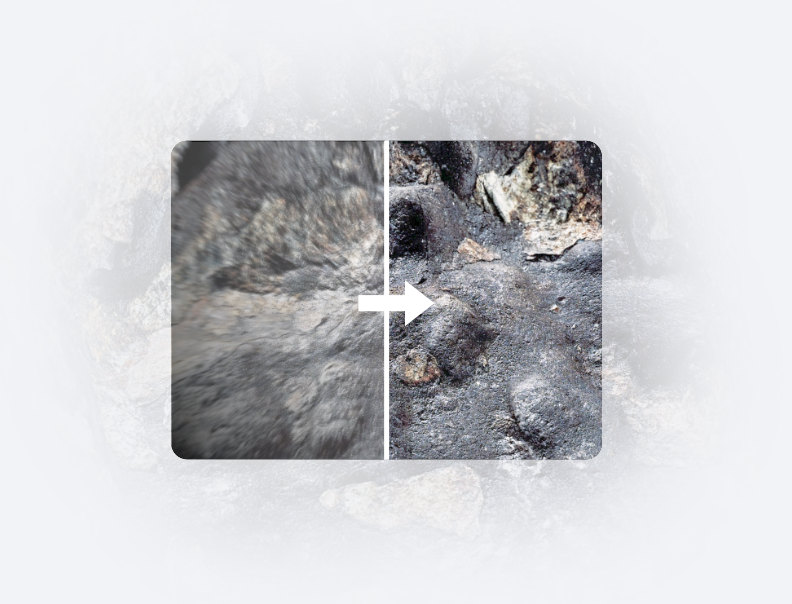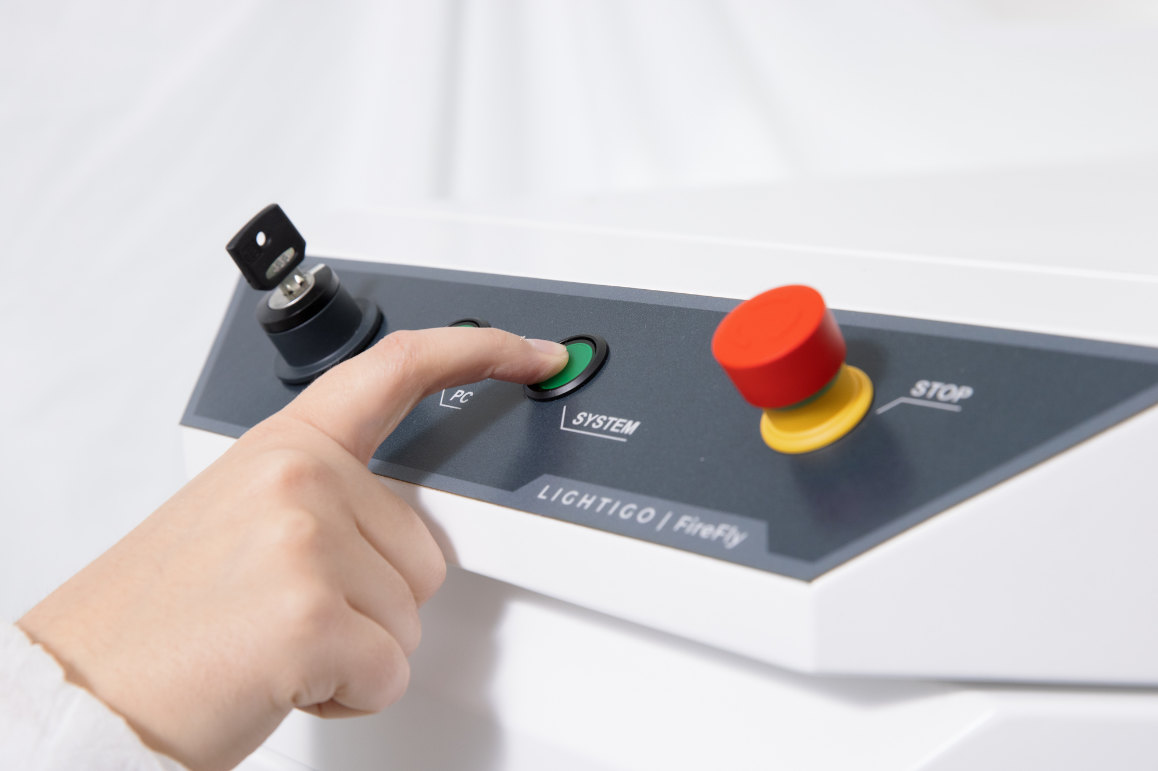FireFly
Rapid Multi-Elemental Analysis
and Chemical Imaging

Main Characteristics
FireFly is a laboratory analytical instrument specialized in rapid multi-elemental analysis and chemical imaging of solid samples.
Solid
Samples
1-100 ppm
Limits of Detection
10-150 um
Spatial resolution
Chemical Imaging
and depth profiling
100 x 100 mm
Scanning area
100 Hz
Scanning rate
Efficient technology
Low operational costs
Wide range of elements
Including Li, Be, Mg, Na, N, C
Meet the FireFly
Applications
Due to the flexibility and capability of the LIBS technique, the potential applications of the FireFly are numerous.
Metals
Tissues
Geology
Biology
Plastics
Key Benefits
Take the experiences and requirements of the users, who work with the elemental analysis on the daily basis. Mix in the unique benefits of LIBS technology and you get the FireFly.
Clear Sample View
No more blurry images! Laser ablation optics are combined with dedicated microscopy sample view optics to provide you with clear and sharp images of a sample being analyzed.
Illumination is of a dual-type to adapt to the wide spectra or sample types:
- Colinear LED Illumination
- Diffused LED illumination


Quick targeting
You will never get lost on magnified sample surface while searching for desired spot for the analysis.
- Switch between multiple Field of Views.
- Create whole-stage overview image
- Move the sample simply by mouse button click on desired spot.
Measurement modes
Whether you want to check few spots dispersed on the sample or perform large area scan, FireFly has a right tool.
Multi-Spot
Schedule a series of spots and start the measurements at once.
Mapping
Scan the are to visualise concentrations of multiple elements.
Line scan
Scan along the line, boundary or vein by drawing a polygonial line.

Depth profiling
For each spot, a total number of laser pulses and measurements can be set. Resulting group of spectra from each spot can be used for:
- Accumulation for improving the signal to noise ratio thus improving the limits of detection.
- Multi-layer depth analysis to determine elemental composition of individual depth layers of the material.
Spectra and Maps
Explore the results in a form of spectra and chemical maps utilizing flexible and intuitive tools.
- Pan, Scroll, Scale, and change color histogram.
- Use Max, Mean, SDEV, and Peak overlay curves to simplify the quick spectra evaluation.
- Quickly re-draw the map to display the distribution of concentration of a different element.
- Filter spectra by unique metadata.
- Show atomic emission lines from NIST and/or Lightigo LIBS database
- Export to ASCI, Bitmap, or Lightigo optimized data file.

Mapping capabilities
Single map scan collects complete analytical data about the elemental composition. Creating the map for any present element is a matter of moment.
Area
Up to 100×100 mm2
Scanning rate
Up to 100 Hz, full UV-NIR range spectra
Resolution
10 µm minimal, 30–100 µm typical
Duration
1 square cm in 8 minutes*, 50 µm step size = 512 DPI.
Maps can be exported in fast native Lightigo file format and further processed in Lightigo ImageLab – an advanced multisensor imaging tool for processing and analyzing chemical maps and hyperspectral images based on EPINA ImageLab.
Overview of Features
- Data processing – arithmetic operations, data corrections, denoising, smoothing, …
- Multivariate statistical methods – PCA, Cluster Analysis, SIMAP, PLS/DA, RDF, VCA, MNF
- Image analysis – multisensor imaging, interpolation, regression, variance map, signal distribution analysis, …
- Data visualization – combining with photos, image fusions, 3d surfaces, flexible mask editor, …

Technical Highlights
Laser Wavelength
switching
With the FireFly you can always select laser wavelength, which is optimal for your current applications.
- Do you need a smaller spot size or high absorption for transparent materials? Select UV 266 nm.
- High pulse energy is the priority?
Switch to IR 1064 nm. - Or simply utilize versatile VIS 532 nm.
There is no need to disassemble or adjust anything. Switching is motorized and can be controlled directly from the control software.



Multiple objectives
Different optical tasks require different objectives in order to be solved without any compromises:
- Multiple plan-apochromatic objectives for sharp sample view with various magnifications.
- High damage-threshold objectives corrected for precise laser focus either in micro-focus or long-depth of focus versions.
FireFly has them all – moreover, mounted on motorized objective turret controlled via single button click in SW!
Laser focusing
FireFly can handle non-flat samples, which otherwise might cause laser defocus and signal fluctuations during the mapping.
- Autofocus, even during the mapping.
- Dedicated long depth of focus (DOF) objective.
Motorized focusing stage can be used to change the laser spotsize on the sample directly from the control software.
- Less than 20 µm spot size can be achieved by aperture imaging technique.
Gas modules
Gas purge
- Cleans the sample to avoid „smearing“ of the signal to surrounding spots on the chemical map.
- Creates local inert gas atmosphere to significantly improve the limits of detection.
Dust Extraction
- Extracts potentially toxic vapors of laser ablation
- Keeps the optomechanical components clean.

Core Components
Lasers, spectrometers, and detectors are the core components of every LIBS system.
There are multiple configurations of which we always select the optimal one based on customers’ requirements.
Lasers
DPSS Nd:YAG pulsed laser is used for inducing the plasma.
- Modern and efficient Diode-Pumping (DPSS).
- Longer life-time, and better stability compared to the traditional FPSS lasers.
- Effeciency of the DPSS results in a lower power consumption, quite run, and simple air cooling.
- 24/7 operation capability.
- Motorized pulse regulation, energy meter and wavelength conversion is available.
Spectrometer
Plasma radiation is captured by the UV-NIR collecting optics and spectrally decomposed by the spectrometer.
- Compact multichannel Czerny-Turner spectrometers.
- High-performance Echelle spectrometers.
Detector
Radiation is captured by the detector and converted into the spectra.
- Basic CMOS detectors.
- Advanced sCMOS or EMCCD detectors.
- Specialized intensified sCMOS/CCD detectors

Miscellaneous
User roles
It is possible to differentiate individual users. Different roles has different rights in control software.
configuration profiles
Various system configuration can be saved and loaded thus easily used next-time.
Self-diagnostics
Initial measurement of standard highly homogenized sample is used to track and visualise system performance.
Measurement guides
Step-by-step guides for most common measurement scenarios.
Automated log
Activity of the user is automatically recorder, can be browsed and exported.
External synchronization
Internal synchronization clock can be synchronized both IN and OUT to external instruments utilizing TTL pulses and BNC connectors.

FireFly Exterior
What about
the Ergonomy?
Every obstacle counts
when analyzing for hours …
We are aware of this, so we have put our effort to design an efficient and comfortable work position with easy chamber/sample access.
- A spacious front window enables one to observe the interaction area and laser ablation from the front.
- Side windows enable the user to see into the chamber while sitting in front of PC.
- The Chamber door handle is perfectly accessible directly from the PC. Just extend your arm and open the wide chamber door to comfortably handle the sample.

Dimensions
Except for the optional Dust Extraction Module, every component is integrated inside the housing. No mess around the workstation!
Operator’s desk is available as an option.
Front View

Right View




Contact
Get the best of your research!
Do you want to discuss your application, know more about the FireFly features or do you need a quotation?
In case of any question, do not hesitate to contact us.
Get on the list!
From time to time we release some interesting news from our activities,
development, projects or products.
So stay in touch with us!

